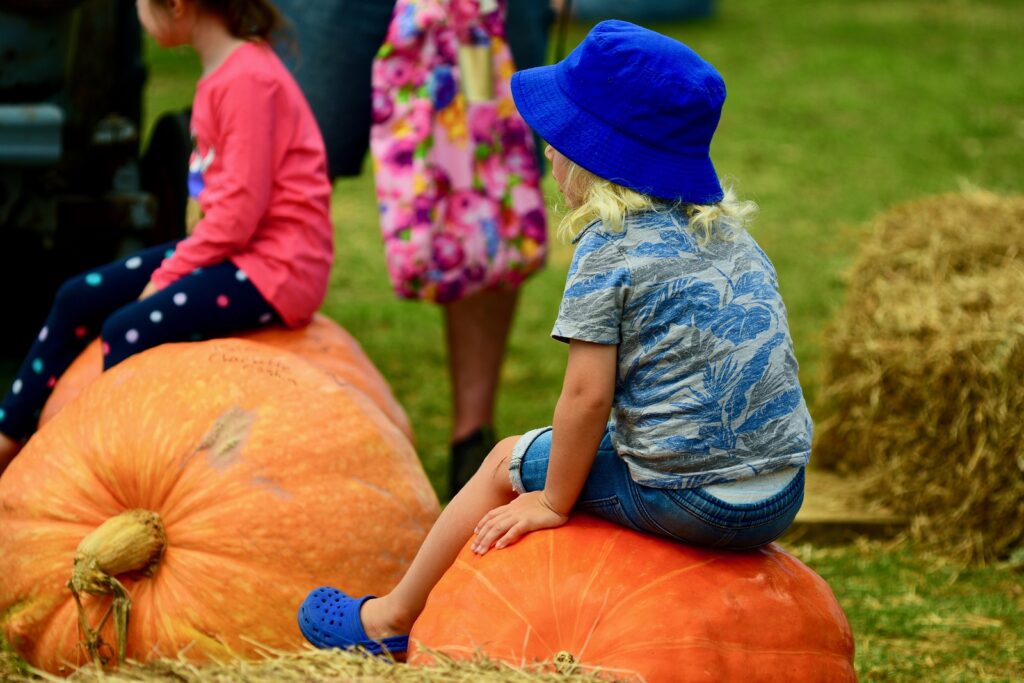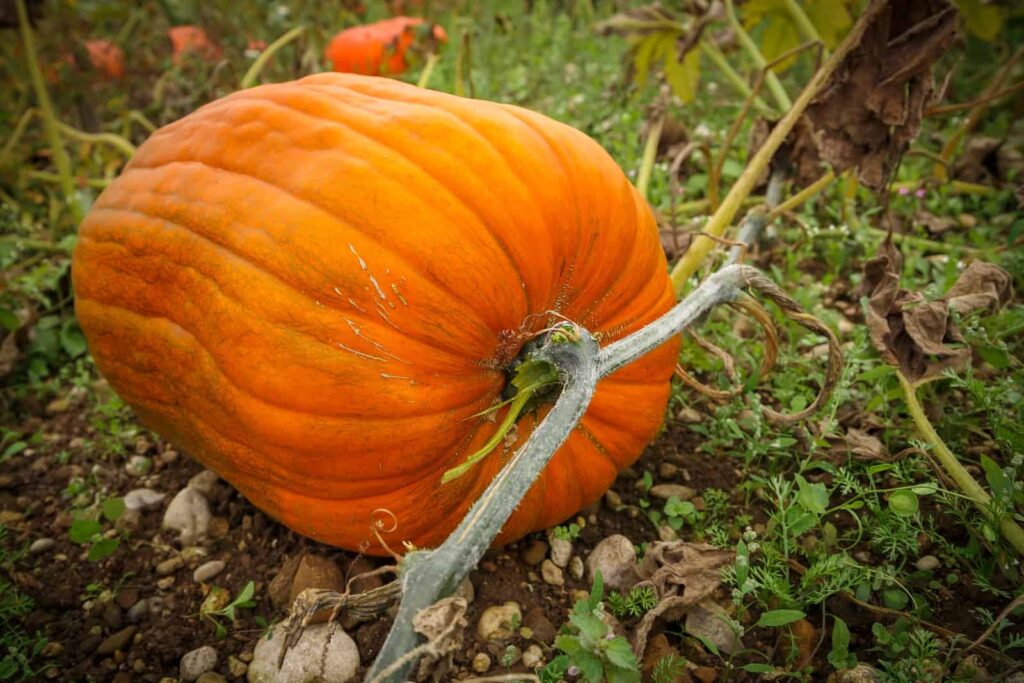Pumpkins are ready for harvest 75 to 115 days from sowing depending on the variety. Pumpkins can be left on the vine until the first frost in autumn is near. Cut pumpkins from the vine two weeks before the first frost and let them cure in the sun.
Related articles:

When to harvest pumpkins
- Harvest pumpkins when they are fully colored and the rinds are hard.
- The color of a mature pumpkin can vary according to variety; mature coloration can be orange, white, gray, or blue-gray.
- A mature pumpkin will have a hard, shiny shell that is not easily dented or punctured by a fingernail. The stem of a mature pumpkin will be hard and shriveled. Pumpkins will rot if harvested too young.
- Harvest pumpkins before the first hard frost. Do not leave pumpkins in the garden if the weather turns cold and rainy or if a freeze is predicted.
- If pumpkins can’t be harvested before cold and rainy weather comes, put hay or straw under them to prevent rot caused by contact with damp soil. (Earlier in the season, as the fruit is ripening, you can place a piece of wood or tile or a piece of cardboard or folded newspaper beneath pumpkins to prevent contact with soil and rot.)

How to harvest pumpkins
- Cut pumpkins from the vine with a sharp knife or garden lopper. Leave 3 to 6 inches of stem attached to the fruit. The attached stem will protect the fruit from disease and insect attacks.
- Pumpkin vines can be prickly, so protect your skin by wearing gloves and long sleeves when harvesting.
- Handle pumpkins with care to avoid nicking or bruising the skin.
- Lift and carry pumpkins by slipping your hand under the bottom of the fruit. Do not lift or carry a pumpkin by the stem; a heavy pumpkin can detach from the stem, fall, and crack or break. Stemless pumpkins do not store well.

How to cure and store pumpkins
- Clean harvested pumpkins with soapy water to remove soil and kill pathogens on the surface of the fruit; use one part chlorine bleach to ten parts water. Dry the fruit after washing and place the fruit in a dry place to cure.
- Cure pumpkins by setting them in a warm place–80-85°F (26-29°C) and 80 to 85 percent relative humidity—for 10 days to two weeks. Curing will harden the skin, heal wounds, ripen immature fruit, and, importantly, improve flavor.
- If frost or cold nights are predicted, cover curing pumpkins with old blankets or move them into a shed or garage.
- Store cured pumpkins at about 50°F (10°C) with about 60 percent humidity, a shed or garage will do. Cool and dry are the best storage conditions for pumpkins. Pumpkins exposed to temperatures below 45°F (7°C) will soften and rot.
- Cured pumpkins will keep for 2 to 3 months. Store the pumpkins so that they do not touch.
Kitchen tips: Five Ways to Cook Pumpkin
Growing tips: How to Grow Pumpkins
Squash articles at Harvest to Table:
How to Grow Summer and Winter Squash
How to Plant and Grow Pumpkins
How to Harvest and Store Summer Squash
How to Harvest, Cure, and Store Winter Squash
How to Harvest and Store Pumpkins
Eight Ways to Cook and Serve Summer Squash
Seven Ways to Cook and Serve Winter Squash
How to Make Creamy Pumpkin Soup
How to Cook and Serve Squash Blossoms
Squash Growing Problems: Troubleshooting
Squash Vine Borer Organic Pest Control
Squash Bug Organic Pest Control
Corn, Beans, and Squash: The Three Sisters
Garden Planning Books at Amazon:
- Vegetable Garden Grower’s Guide
- Tomato Grower’s Answer Book
- Vegetable Garden Almanac & Planner
- Kitchen Garden Grower’s Guide Vegetable Encyclopedia
More harvest tips:
Learn when and how to harvest your favorite vegetables for the best flavor and texture. Get storage tips for each crop. Click on the vegetable you are growing below.
- Artichoke
- Arugula
- Asparagus
- Beans
- Beets
- Broccoli
- Brussels Sprouts
- Cabbage
- Cantaloupe — Melons
- Carrots
- Cauliflower
- Celery
- Chard
- Collards
- Corn, Sweet
- Cucumbers
- Eggplant
- Endive and Escarole
- Garlic
- Jerusalem Artichoke
- Kale
- Kohlrabi
- Leeks
- Lettuce
- Melons
- Okra
- Onions
- Parsnips
- Peas
- Peppers
- Potatoes
- Pumpkins
- Radicchio
- Rhubarb
- Rutabaga
- Spinach
- Squash, Summer
- Squash, Winter
- Sunchokes
- Sweet Potato
- Swiss Chard
- Tomatillo
- Tomatoes
- Turnips
- Watermelon















